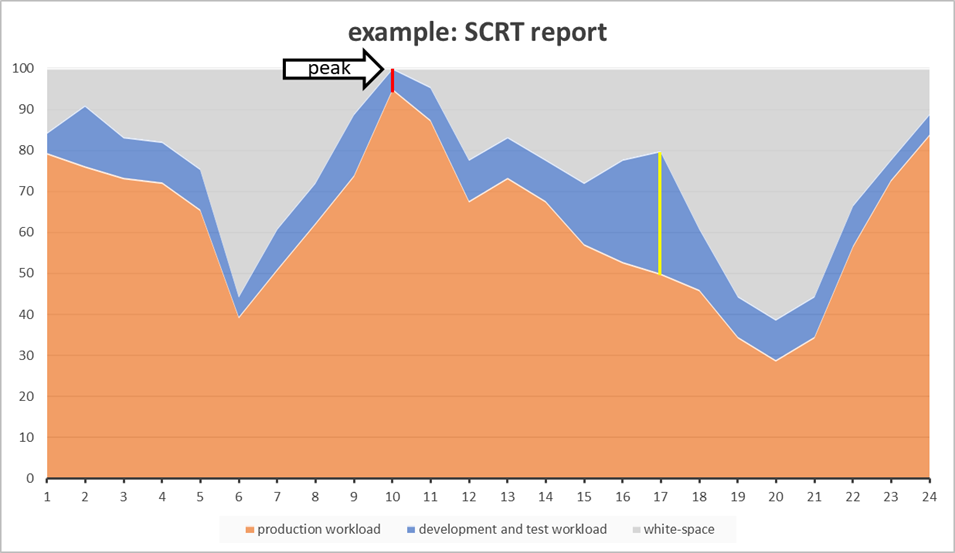Everyone is talking about “IBM Tailored Fit Pricing”: but why?

“IBM Tailored Fit Pricing” (IBM TFP) has been available on the market for 2 years, but many customers are still not sure whether they can benefit from this model. And at the latest since the discontinuation of other license models, such as the IBM Country Multiplex Pricing Offering, some customers feel compelled to deal with the subject of IBM TFP.
IBM Tailored Fit Pricing is a new mainframe billing model. Today this model consists of 5 contract options. Two of these options will be of particular interest to most customers: “IBM Development and Test Solution” and “IBM Software Consumption Solution”.
IBM Development and Test Solution
The “IBM Development and Test Solution” has been available since 2017. This enables each customer to use the workload capacities more flexibly for development and test purposes. The prerequisites for this are that the workload is also classified as a “development and test workload” and operated on separate LPARs (see Announcement Letter 218-324).
In future, the consumption of the development and test LPARs will be determined separately and will not be accumulated with the consumption of the remaining (production) workload. The development and test LPARs can now be fully utilized in parallel with the peak of production. This means that the developers always have their full capacity at their disposal.
The calculations of the “IBM Development and Test Solution” are simplified in 3 steps:
- The existing LPARs are individually verified against the “IBM Development and Test Solution” criteria. After that, all eligible LPARs are treated together as one combined development and test container.
- The MSU value of the hour with the highest average R4HA of development and test LPARs is evaluated on the basis of 3 consecutive SCRT reports. This MSU value is used as the MSU base for the container (see yellow line in Fig.1).
- To determine the price, a difference is calculated: what MLC costs would have resulted if the development and test LPARs had not been included? This price difference is used as the price for the container (“costs” of red line in Fig.1).
When concluding the contract, the customer also has the option to triple the established MSU base at no additional cost for MLC products. However, this does not apply for the IPLA licenses. They must therefore be taken into account separately. For IBM customers, the “online DevTest Sizing Calculator” is available in the IBM License Management Support (LMS).

Fig. 1 SCRT Report. The graph shows the average R4HA for each hour over a month: The grey space shows the “white-space” which is already paid because of the peak based pricing but contains no workload. The yellow line shows the highest R4HA MSU value for the development and test LPARS alone. The red line shows the contribution of the test and development LPARS at the time of the production peak. This contribution results in additional costs which is used to determine the price of the “IBM Development and Test Solution”.
IBM Software Consumption Solution
The “IBM Software Consumption Solution” is an option that also applies to productive workloads and has been available since May 2019. The previously common R4HA no longer applies within this option. Instead of the peak of the workload, the consumed MSU are now used with a fixed price per MSU to calculate the costs.
“IBM Software Consumption Solution” also offers other advantages:
- The hardware can be used without technical restrictions (eg soft-capping) in order to reduce batch windows, for example.
- SCRT exceptions can still be reported and taken into account (eg loops).
- For additional MSU consumption, IBM usually offers an attractive growth price.
- Software products can still be included or canceled in the contract as usual.
- Internal cost allocation can be simplified.
With the “IBM Software Consumption Solution”, however, there are also points that should be considered:
- With the previous peak billing, customers had the opportunity to grow outside of the peak cost-neutrally in the “white space”. With this option these “white spaces” no longer exist (see grey area in Fig.1). This means that every consumed MSU will now be billed.
- The IPLA products used also receive a conversion, which has to be considered individually.
- The monthly SCRT transmission is still necessary.
- The contracts from other providers must also be taken into account: many providers have already adjusted their product billing accordingly.
The calculation of the “IBM Software Consumption Solution” is simplified in 5 steps:
- All LPARs are considered! Exception: LPARs that are regulated in a separate contract (e.g. “IBM Development and Test Solution” or “IBM System z Solution Editions”).
- All used MSU (of the relevant LPARs) within the last 12 months are accumulated. This value is used as the annual MSU baseline.
- The associated MLC invoices are used as a financial baseline. Consumption-independent products are treated separately here.
- The financial baseline is adjusted through planned changes in the software inventory. This includes: updating new software versions, adding new software products and cancelling software products that are no longer needed.
- The agreed fix price per MSU ultimately results from the MSU baseline and the financial baseline. This is also the basis for the growth price offered by IBM.
In summary, in the “IBM Software Consumption Solution” the option of “white space use” is opposed to the option of operating the workloads independently of peaks. In addition, customers have the opportunity to fully utilize the entire hardware if required.
Let’s summarize the two solutions:
The “IBM Development and Test Solution” is an valuable solution to give developers more flexibility without having to consider the peak of the production LPARs. From our point of view, this option offers great advantages for most customers: it is an important pillar for companies in order to keep the mainframe vital.
With the “IBM Software Consumption Solution”, customers can use their hardware capacity more flexibly than before. However, we would recommend analyzing the medium- and long-term needs more closely in order to assess whether the option makes sense for the respective company.
The two options can also be used together: customers can decide for themselves whether an “IBM Development and Test Solution”, an “IBM Software Consumption Solution” or both is suitable for them.
About Living Mainframe
Founded in 2018, Living Mainframe is a German company advising and supporting projects in the field of IBM Mainframe Systems, which ensure that the Mainframe remains an attractive option for innovative IT projects.
Living Mainframe is SMT Data’s consulting partner.
-
 Yvonne Christine BauerConsultant and Project Manager
Yvonne Christine BauerConsultant and Project Manager